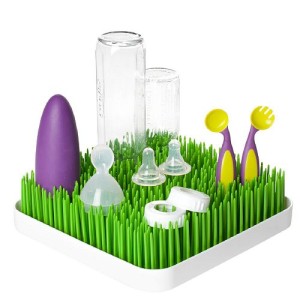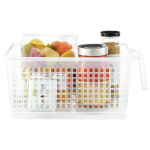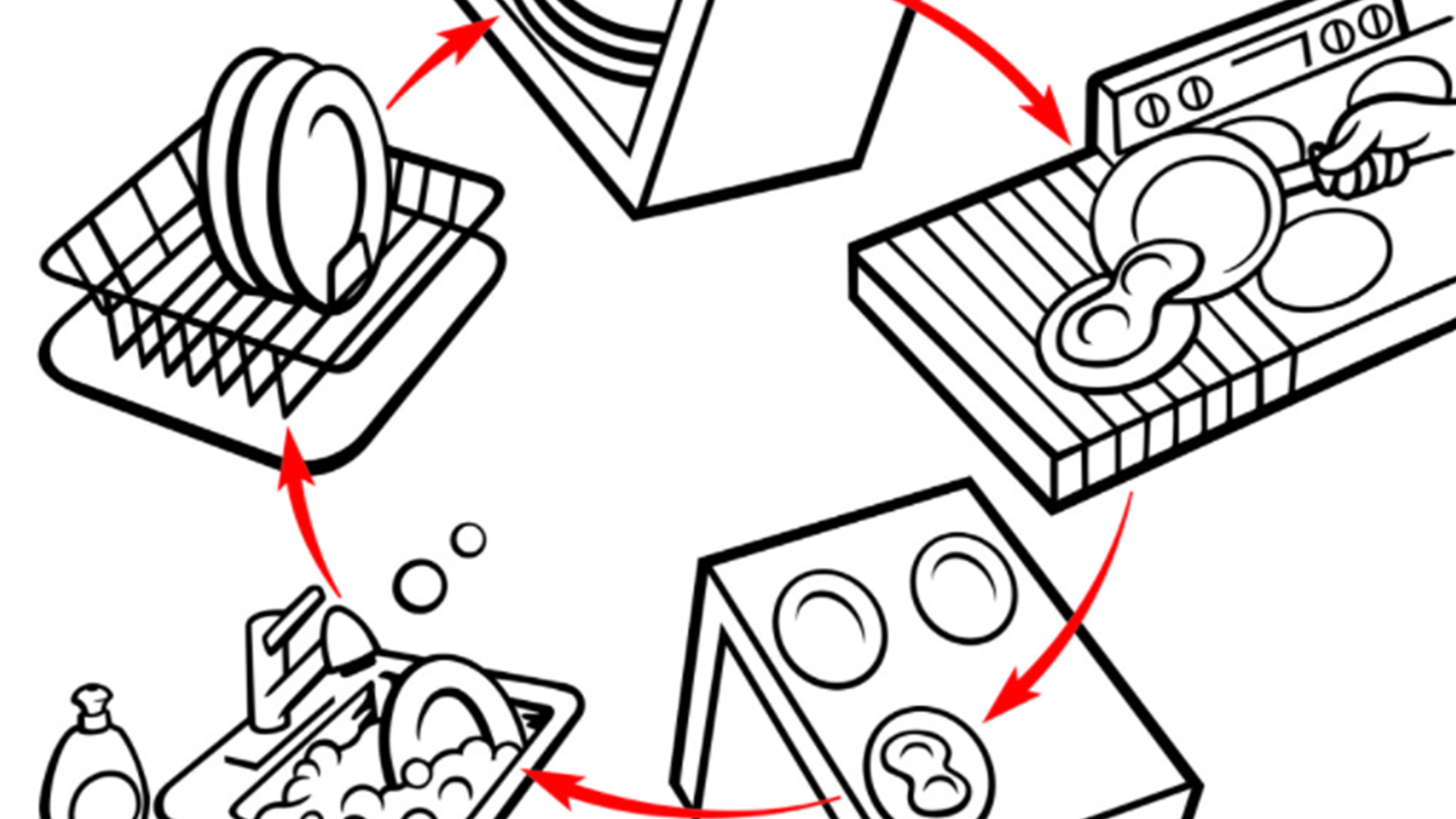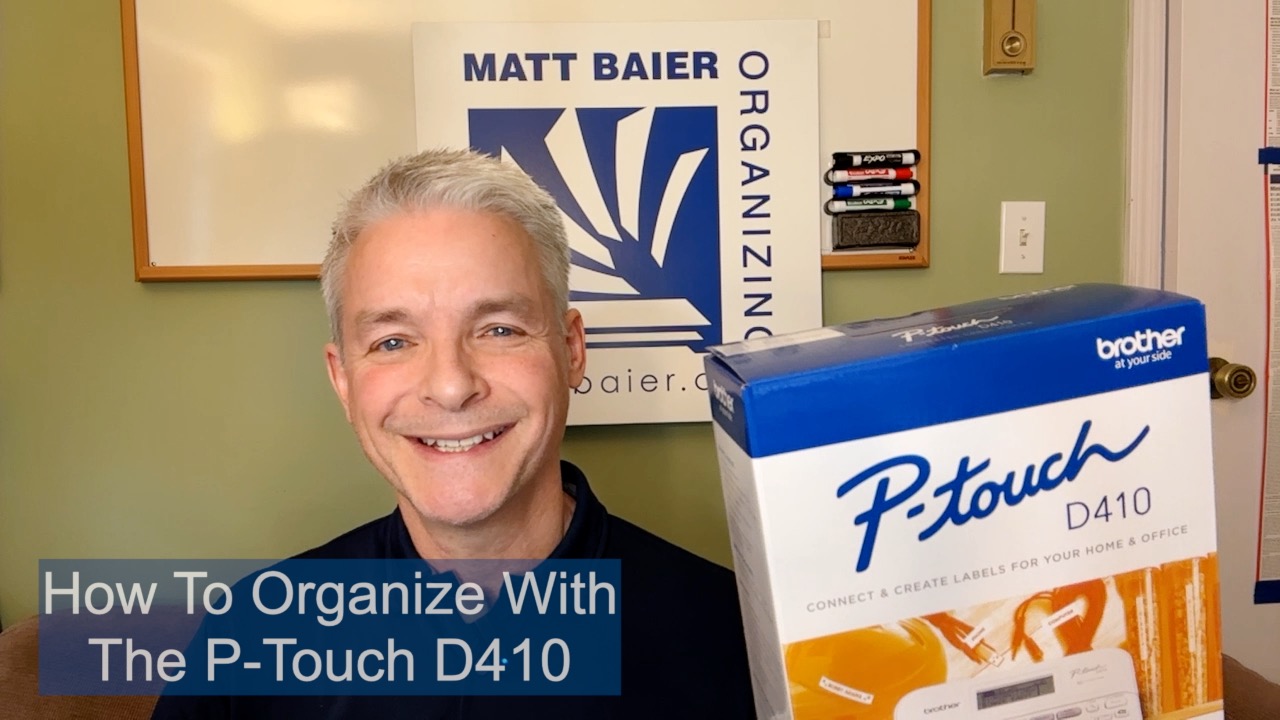If there was one room that made sense as a lab to experiment with organizing processes, it would be the kitchen. If you can master these principles in the kitchen lab, you can master them in the rest of your house. Here are five of my favorites.
1. Circulation Prevents accumulation
This is my number one principle. Circulation means having a plan for MOVEMENT in a series of manageable, reliable steps. The perfect example, can be found in your dishes. You can reliably find dishes in the cabinet, then they go to your counter for plating, then to the table for eating, to the sink for washing, to the drying rack for drying, and then back to the cabinet. If any step breaks down, then the whole cycle breaks down. So whatever step gets stuck, find a way to simplify. For example, maybe the dishes pile up in the sink to the point where they discourage washing. After a couple of days, you start to run out of counter space, and then you start to run out of dishes in the cabinet. The one step that is not manageable and reliable has an effect on everything. Perhaps you can simply break the dishes into cookers and servers and do one at a time, so you have all the sink room you need to work. Hate finding a place to dry all those tiny baby bottle pieces? This Boon Grass product makes that step easier. It could be anything. The key is, to recognize the bottleneck, the part you may hate the most, and find a way to make it more manageable, so it gets done more reliably. This also applies to laundry, paperwork, everything.
then you start to run out of dishes in the cabinet. The one step that is not manageable and reliable has an effect on everything. Perhaps you can simply break the dishes into cookers and servers and do one at a time, so you have all the sink room you need to work. Hate finding a place to dry all those tiny baby bottle pieces? This Boon Grass product makes that step easier. It could be anything. The key is, to recognize the bottleneck, the part you may hate the most, and find a way to make it more manageable, so it gets done more reliably. This also applies to laundry, paperwork, everything.
2. The number one organizing TOOL is a clear work surface
Many activities need to happen in a kitchen, so it is vital to keep your surfaces clear. A surface allows you to spread out, prioritize and process away. Keep the bare minimum of tools out, vertically if possible, to free up that precious surface area. Don’t waste your surface area on storage and don’t think of it as just another structure. It is a tool and like most tools, it has as specific purpose. That purpose should processing. A clear surface is also your most important organizing tool in your home office, laundry room, or garage.
3. Frequency merits facility
 This means that the more you use something the more accessible is deserves to be. Accessibility should be based on frequency, not importance. For example, you may consider grandma’s tea set as very important, but you only use it once or twice a year. If it’s taking prime real estate, say eye level just inside the pantry door, it should surrender that space to something you use several times a day, like a small recycling bin. You may consider recycling unimportant, but finding a place for recyclables is something you have to do, several times a day. It’s easier to stay organized if grandma’s tea set goes to an upper shelf or to the basement. By the way, the small recycle bins are an example of a manageable, reliable step in circulation of the disposal process. Look really critically at everything. In the small collection of utensils you leave out, are you really ladling soup that often? Maybe that rubber spatula you are always digging for should replace the ladle. Consider how often you use highly accessible items in every room, especially the home office.
This means that the more you use something the more accessible is deserves to be. Accessibility should be based on frequency, not importance. For example, you may consider grandma’s tea set as very important, but you only use it once or twice a year. If it’s taking prime real estate, say eye level just inside the pantry door, it should surrender that space to something you use several times a day, like a small recycling bin. You may consider recycling unimportant, but finding a place for recyclables is something you have to do, several times a day. It’s easier to stay organized if grandma’s tea set goes to an upper shelf or to the basement. By the way, the small recycle bins are an example of a manageable, reliable step in circulation of the disposal process. Look really critically at everything. In the small collection of utensils you leave out, are you really ladling soup that often? Maybe that rubber spatula you are always digging for should replace the ladle. Consider how often you use highly accessible items in every room, especially the home office.
4. Showroom vs. Stockroom
 Along the lines of frequency merits facility is the principle of showroom vs. stockroom. In the showroom of a clothing store everything is very open, inviting, well lit, and highly accessible. Everything for the customer is generally stored at eye level or below. There is limited inventory on the showroom floor and when you run out of inventory, the clerk goes to the stockroom, where it’s a different story. It is less open and inviting and inventory is stored higher. Things may be less accessible, but everything is still very findable. The kitchen should be like the showroom— open, inviting, limited inventory. The way to make this possible is to create reliable stockrooms. That could be in the pantry, in the basement, in the garage, or in any combination. These stockrooms could hold kitchen duplicates, large supplies, holiday items, entertaining items, seasonal items, and sentimental items (like grandma’s tea set). Don’t use these spaces
Along the lines of frequency merits facility is the principle of showroom vs. stockroom. In the showroom of a clothing store everything is very open, inviting, well lit, and highly accessible. Everything for the customer is generally stored at eye level or below. There is limited inventory on the showroom floor and when you run out of inventory, the clerk goes to the stockroom, where it’s a different story. It is less open and inviting and inventory is stored higher. Things may be less accessible, but everything is still very findable. The kitchen should be like the showroom— open, inviting, limited inventory. The way to make this possible is to create reliable stockrooms. That could be in the pantry, in the basement, in the garage, or in any combination. These stockrooms could hold kitchen duplicates, large supplies, holiday items, entertaining items, seasonal items, and sentimental items (like grandma’s tea set). Don’t use these spaces  to hide things away or you won’t trust them and they won’t be a reliable alternative to the kitchen counter. This principle can save a ton of space in your bedroom and home office.
to hide things away or you won’t trust them and they won’t be a reliable alternative to the kitchen counter. This principle can save a ton of space in your bedroom and home office.
5. Reveal, Don’t Conceal
One of the reason so many things are stored on our precious surfaces, is because it is easiest to find them there, but there are limits. When too many items are stored in the open, you have the Where’s Waldo effect and things get lost. So some loose items need to go on shelves and smaller ones need to go into containers. Raise the odds of find-ability, by going with clear containers, wherever  possible. In the process of cooking, clear containers, make the step of finding items more reliable. Once again, this applies to the home office, closets, and all areas of the house.
possible. In the process of cooking, clear containers, make the step of finding items more reliable. Once again, this applies to the home office, closets, and all areas of the house.
If you find staying organized difficult, start with just a few solid principles, and start in the kitchen.
Do you find it difficult to keep your kitchen organized?
Please Share With Your Community





















